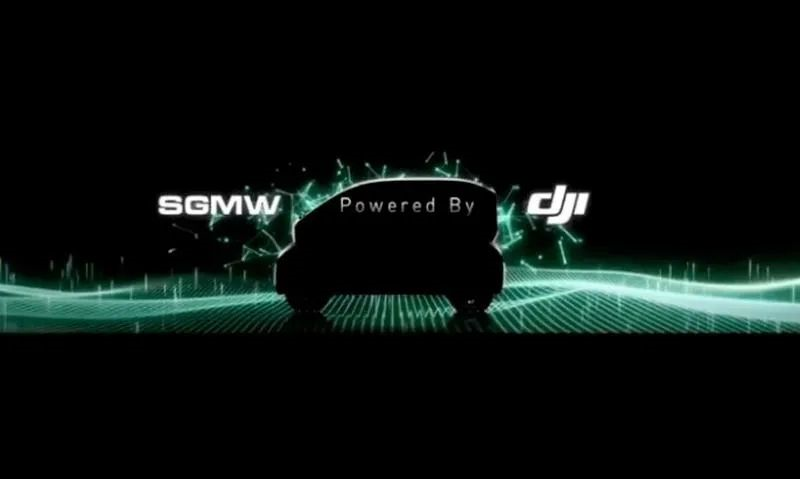Article by | Li Ka-shing
Editor | Leng Zelin
On June 9, 2022, BAIC Motor’s Baojun brand, under which DJI and SAIC-GM-Wuling are affiliated, launched a co-branded product – Baojun KiWi EV, and delivery is imminent. Baojun had previously stated that it would start preheating in the second quarter.
In the development of new energy vehicles over the past few years, smart driving is undoubtedly the most promising business, but for DJI, this field is both an opportunity and a challenge, because there are too many Internet and technology giants in this field. If you choose to “go head to head,” DJI may not stand out. So DJI chose to “get on board” instead of “making cars.”
The Baojun KiWi EV is of extraordinary significance to both Baojun and DJI. For Baojun, getting support from DJI can enhance its competitiveness in the microcar market, and this cooperation is an important part of its brand upgrade.
From Wuling Hongguang MINI EV, China’s micro transportation car market has gradually become “lively,” and more and more car companies have discovered the potential of the micro transportation car market.
Models such as Chery QQ Ice Cream, Changan Benben E-Star, and LINGPAI T03 have achieved good results by relying on their low prices.
In the early stages of the market, low prices can occupy the market, but as the market matures, low prices will become the source of vicious competition. Especially in the current situation of the sharp rise in upstream lithium-ion raw material prices, it is more difficult for microcars to find a way out.
Among the non-DJI co-branded models, the Baojun KiWi EV also has its own selling points. Compared with its “own brother” Wuling MINI EV, the cruising range has become its absolute advantage, with an NEDC cruising range of 305km, more than twice as much as Wuling Hongguang MINI, but the corresponding price has also doubled.
Compared with the LINGPAI T03 with a maximum generator power of 80kW and the Chery Little Ant with a maximum power of 55kW in the same category, the KiWi EV with a maximum power of only 40kW also seems to be inadequate.
Although the KiWi EV is also equipped with tire pressure display, independent suspension, remote unlocking, and Auto Hold, it is still not an absolute advantage compared to other microcars in the same category.
Faced with competitors like LINGPAI T03 or ORA, the KiWi EV is not unique. It can be seen that the arrival of the DJI co-branded KiWi EV is of extraordinary significance to Baojun.
In fact, the Baojun KiWi EV DJI co-branded model made its debut at the Shanghai Auto Show in April 2021. It is also the first model equipped with DJI’s independently developed auxiliary driving system.For SAIC-GM-Wuling’s product line, it is unnecessary to release a model with little difference as its fellow model Wuling Hongguang MINI EV still holds strong momentum in the low-end market. On the other hand, Baojun faces competition from independent brands such as Changan and Chery. Under such circumstances, DJI becomes an excellent “trump card” for Baojun, reducing the threshold for acquiring auxiliary driving products and thereby establishing its competitiveness in the micro electric vehicle market.
Currently, vehicles with driving assistance functions are relatively expensive. However, the existing pricing of the KiWi EV, ranging from 77,800 RMB to 86,800 RMB, is also relatively high in the micro car market. With the addition of the DJI vehicle-mounted system, if the price increases too much, it would lose its meaning.
How Ambitious Is DJI in the Field of Smart Electric Vehicles Without Manufacturing Cars?
In the field of intelligent electric cars, DJI does not intend to manufacture cars but has introduced three products, namely, intelligent driving D80/D80+, D130/D130+, and intelligent parking P5/P100/P1000.
D80 and D130 are both L2+ level automatic driving systems, while D80+ and D130+ have reached L3 level driver assistance systems. The two sets of systems respectively support the speed range of 0-80 km/h and 0-130 km/h.
Under the same speed level, the L3 and L2+ hardware equipment will make the lidar, surround cameras, driving behavior recognition and warning cameras optional. Compared with the L2+ level, the D130 model has upgraded the performance of the forward camera and central domain controller of intelligent driving and added a rearview camera to ensure redundancy while driving at higher speeds.
As for parking functions, P5/P100/P1000 are designed for different distance parking scenes.
Currently, KiWi EV can achieve L2-level driving assistance functions. Combined with the maximum speed limit of KiWi EV at 105 km/h, DJI’s D80 or D130 is likely to be installed. DJI’s D80+ and D130+ should have different plans in the future.
Of course, DJI is not necessarily limited to providing software and hardware integration solutions like traditional suppliers. According to insiders at DJI, if the automaker has clear requirements for suppliers, DJI can also use hardware designated by customers.
This more flexible approach reduces much friction and barriers to cooperation between DJI and automakers. This may also be one of the reasons why besides SAIC-GM-Wuling, Volkswagen is also willing to cooperate with DJI.
This article is a translation by ChatGPT of a Chinese report from 42HOW. If you have any questions about it, please email bd@42how.com.
